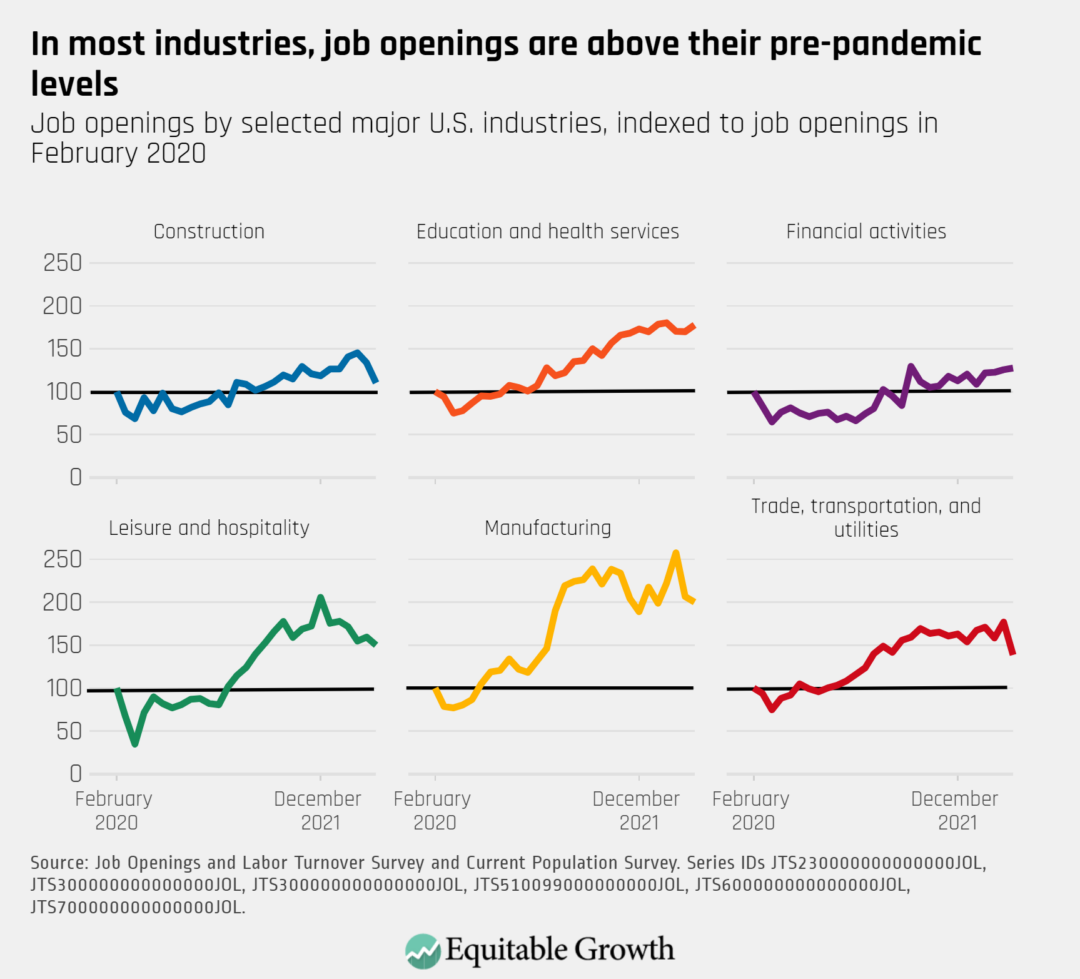JOLTS Day Graphs: July 2022 Edition
The quits rate decreased slightly from 2.8 percent to 2.7 percent, but remains above historical norms for economic expansions.
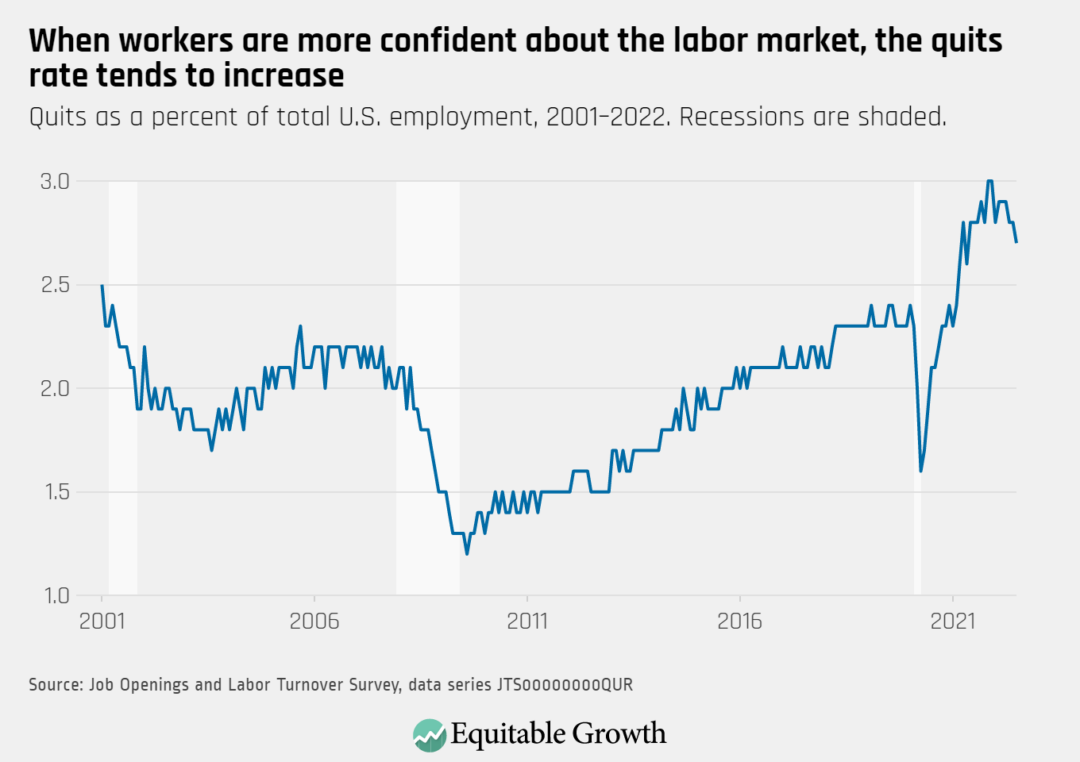
The vacancy yield has plateaued in recent months at low levels of hires per job opening, with each indicator holding steady in July.
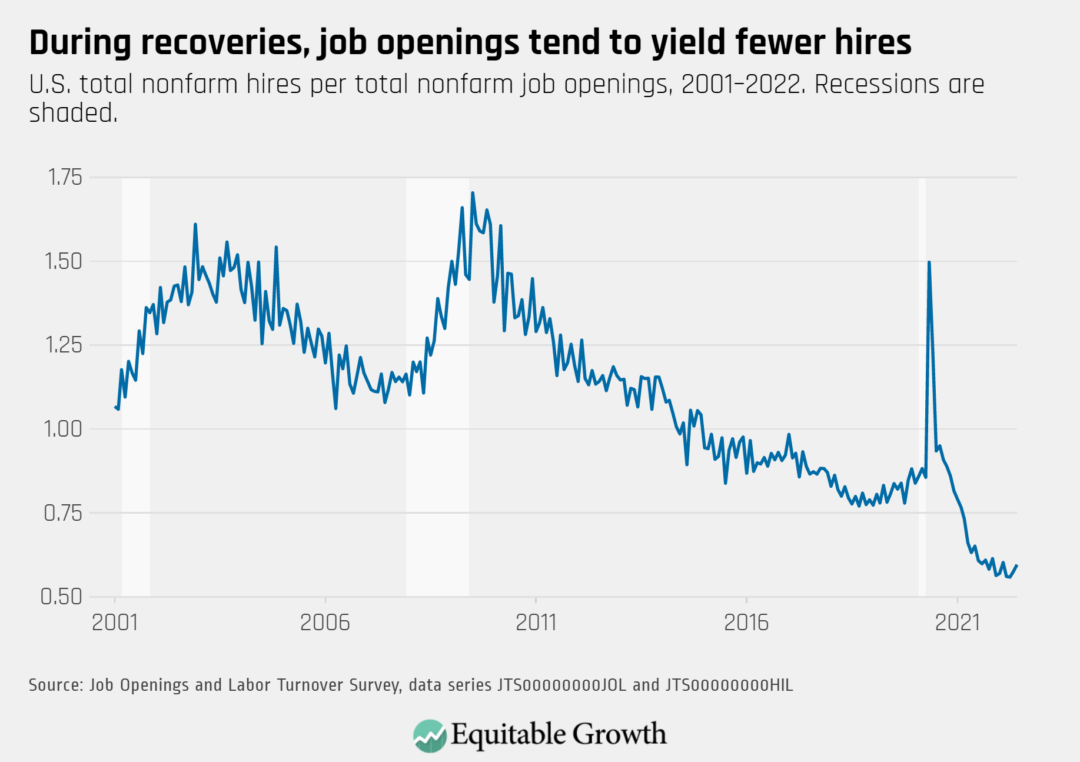
The ratio of unemployed workers per job opening remains well below 1-to-1, decreasing from 0.53 in June 2022 to 0.50 in July 2022.
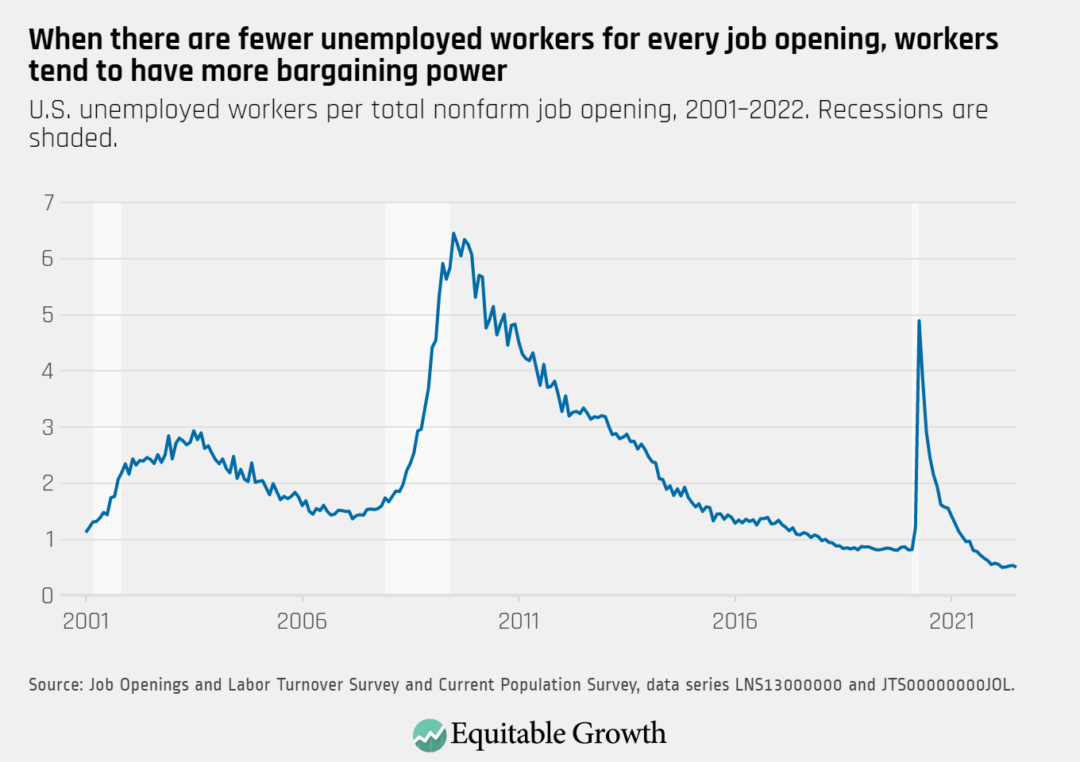
The Beveridge Curve reflects the higher-than-typical job openings rate of 6.9 percent, compared to the low unemployment rate of 3.5 percent.
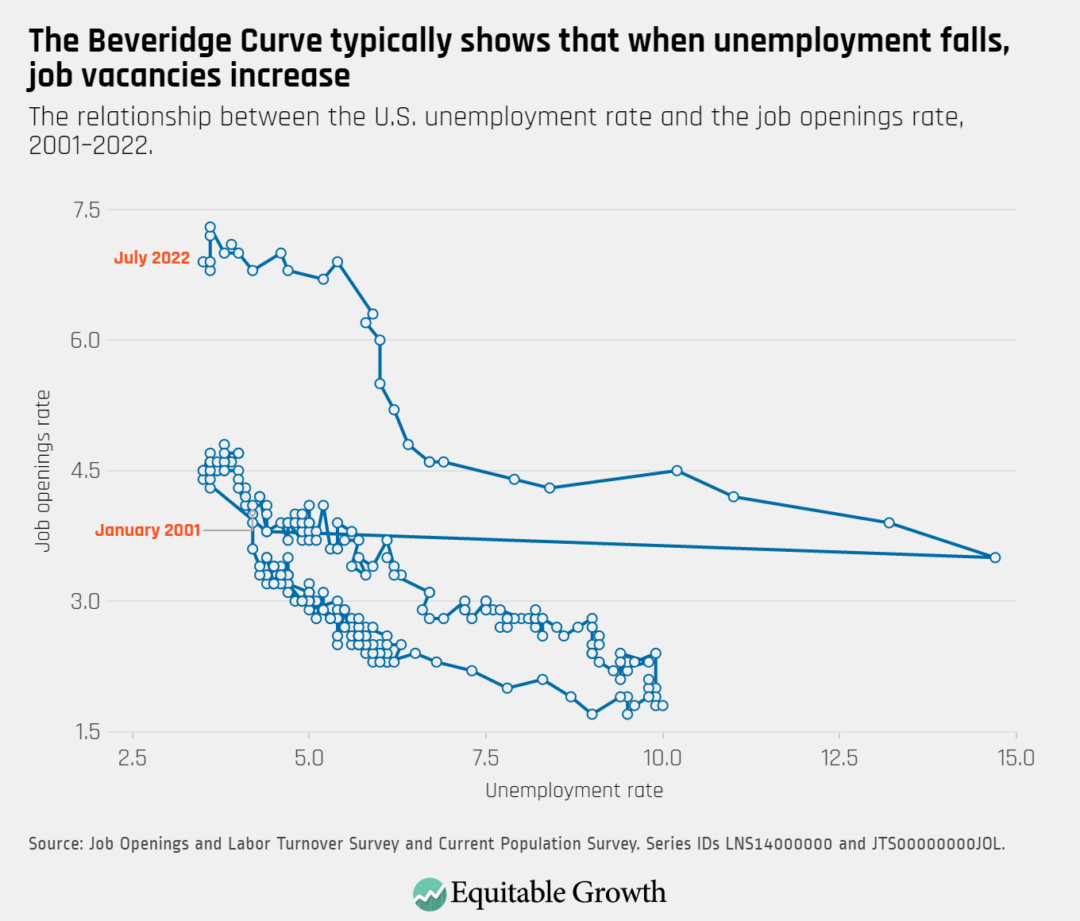
Quits are particularly elevated, compared to their pre-pandemic levels, in manufacturing and construction, among other industries.
